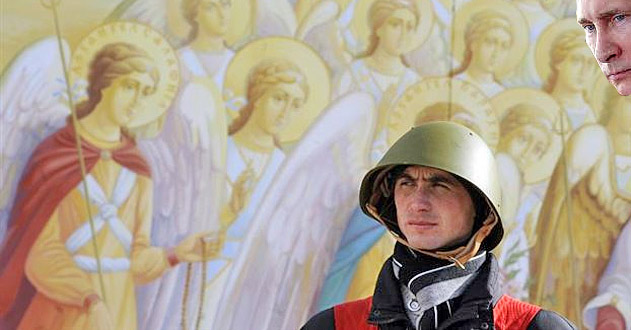 |
|
http://www.nytimes.com Crimea’s Bloody Past Is a Key to Its Present KIEV, Ukraine — On Thursday, masked gunmen vowing loyalty to Russia seized the Parliament building in Simferopol, the capital of Crimea. The simple explanation was that pro-Russian demonstrators in Crimea, a peninsula of Ukraine that juts into the Black Sea, were unhappy with the political developments here in Kiev, where three months of civic unrest led to the ouster on Saturday of President Viktor F. Yanukovych. In a historic sense, however, Thursday’s events were as much about Russia’s relationship with Ukraine as they were about Crimea’s relationship with Ukraine. Crimea, a multiethnic region populated by Russians, Ukrainians and Tatars, has been the focus of territorial disputes for centuries, and in recent decades it has frequently been a source of tension between Ukraine and Russia. Before this week, the most recent of these disputes occurred in May 1992, shortly after the collapse of the Soviet Union, when the Crimean Parliament declared independence from Ukraine. And there has always been an expectation that when things become tense between Russia and Ukraine, that tension is likely to be felt must acutely in Crimea. “The Crimean peninsula has become an arena for the duel between Kiev and Moscow on political, economic, military and territorial disputes,” Victor Zaborsky, an expert on the region, wrote in a 1995 paper for the Center for Science and International Affairs at Harvard University. The 1992 dispute was resolved with an agreement known as the Act on Division of Power Between Authorities of Ukraine and Republic of Crimea, which granted Crimea autonomous status within Ukraine. In that sense, it is similar to the status of Chechnya within Russia. Chechnya’s autonomy nods to that region’s distinct Chechen language and Muslim religion, while in Crimea, such autonomy acknowledges that the political and cultural identity is often more Russian than Ukrainian. Historically, Crimea has been a crossroads for stampeding empires, and it has been occupied or overrun by Greeks, Huns, Russians, Byzantines, Ottoman Turks, Golden Horde Tatars, Mongols and others. It became part of Ukraine in 1954, when the Soviet ruler Nikita S. Khrushchev gave it to Ukraine, then a Soviet republic, as a gift to mark the fraternal bond between Ukraine and Russia.
|
|
|